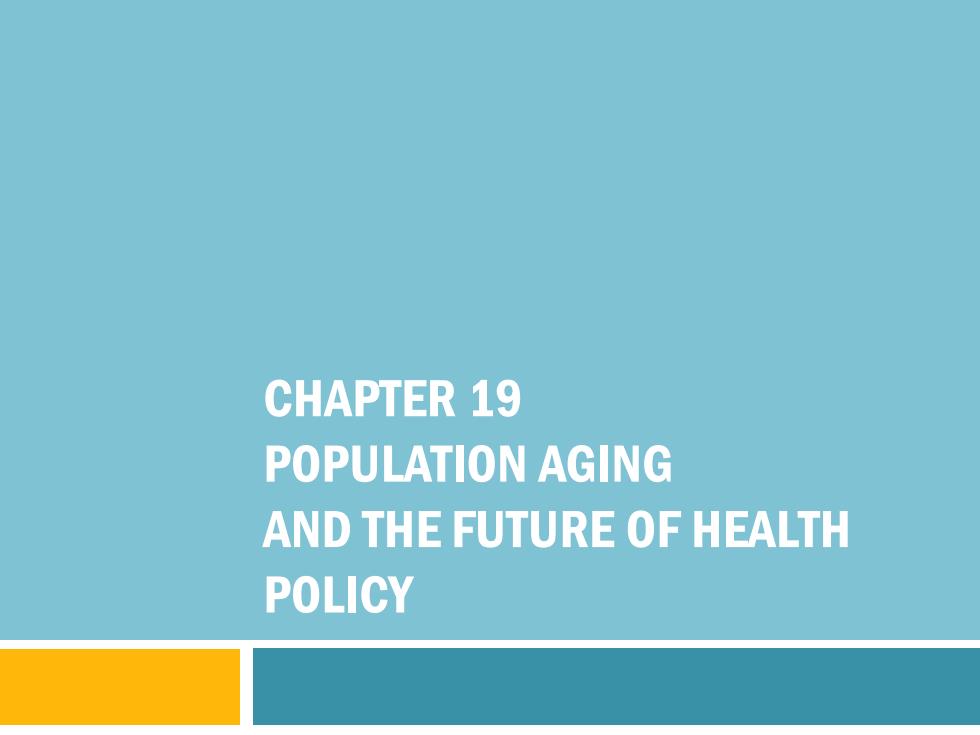
CHAPTER 19 POPULATION AGING AND THE FUTURE OF HEALTH POLICY
CHAPTER 19 POPULATION AGING AND THE FUTURE OF HEALTH POLICY
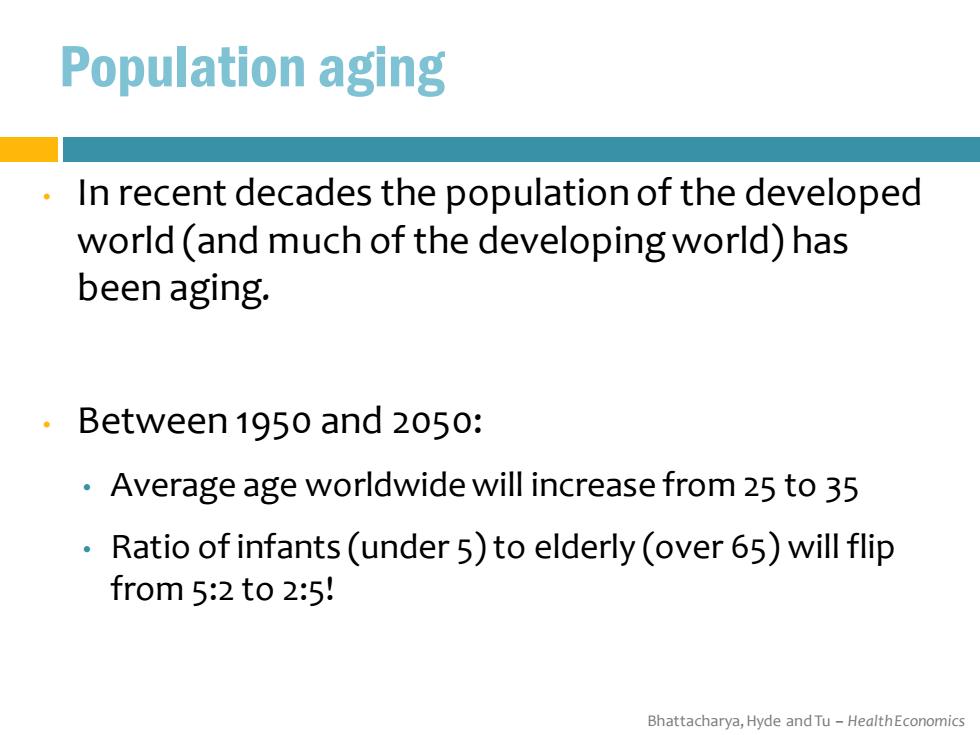
Population aging In recent decades the population of the developed world (and much of the developing world)has been aging. Between 1950 and 2050: Average age worldwide will increase from 25 to 35 Ratio of infants(under 5)to elderly (over 65)will flip from 5:2 to 2:5! Bhattacharya,Hyde and Tu-HealthEconomics
Bhattacharya, Hyde and Tu – Health Economics Population aging • In recent decades the population of the developed world (and much of the developing world) has been aging. • Between 1950 and 2050: • Average age worldwide will increase from 25 to 35 • Ratio of infants (under 5) to elderly (over 65) will flip from 5:2 to 2:5!
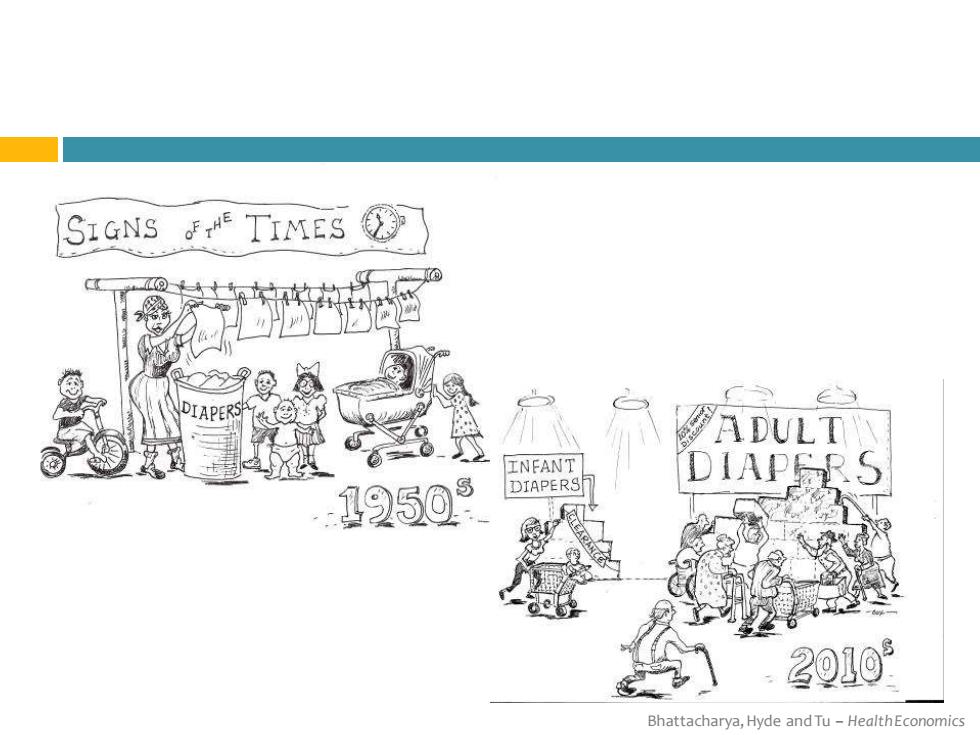
SIGNS TIMES E DIAPERS ADULT INFANT 195Q DIAPERS 2010 Bhattacharya,Hyde and Tu-HealthEconomics
Bhattacharya, Hyde and Tu – Health Economics
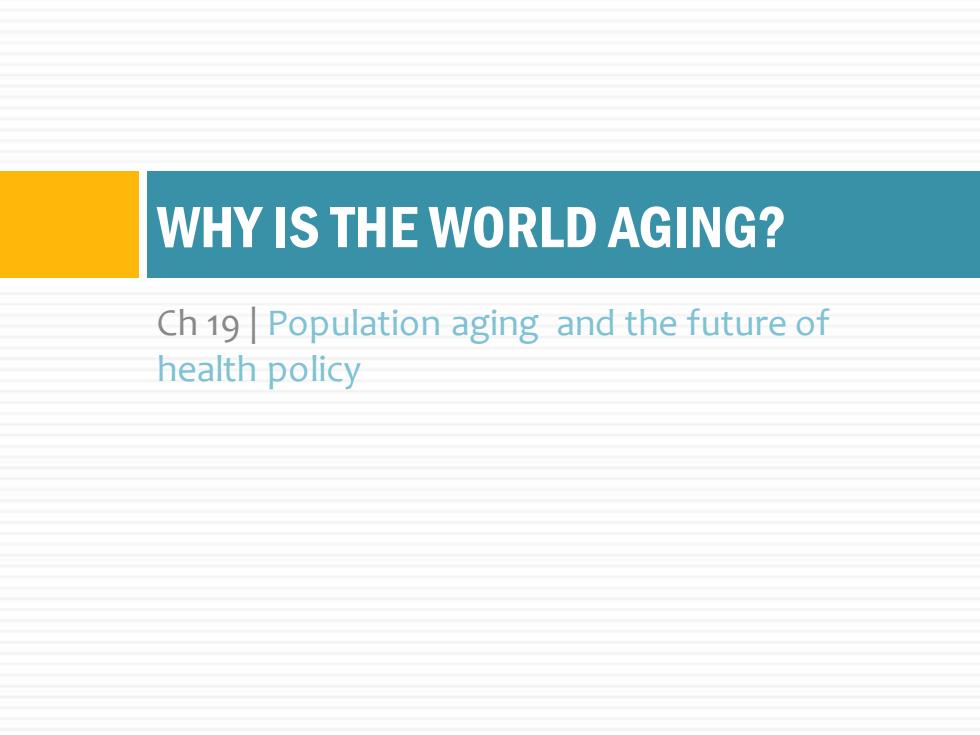
WHY IS THE WORLD AGING? Ch 19 Population aging and the future of health policy
Ch 19 | Population aging and the future of health policy WHY IS THE WORLD AGING?
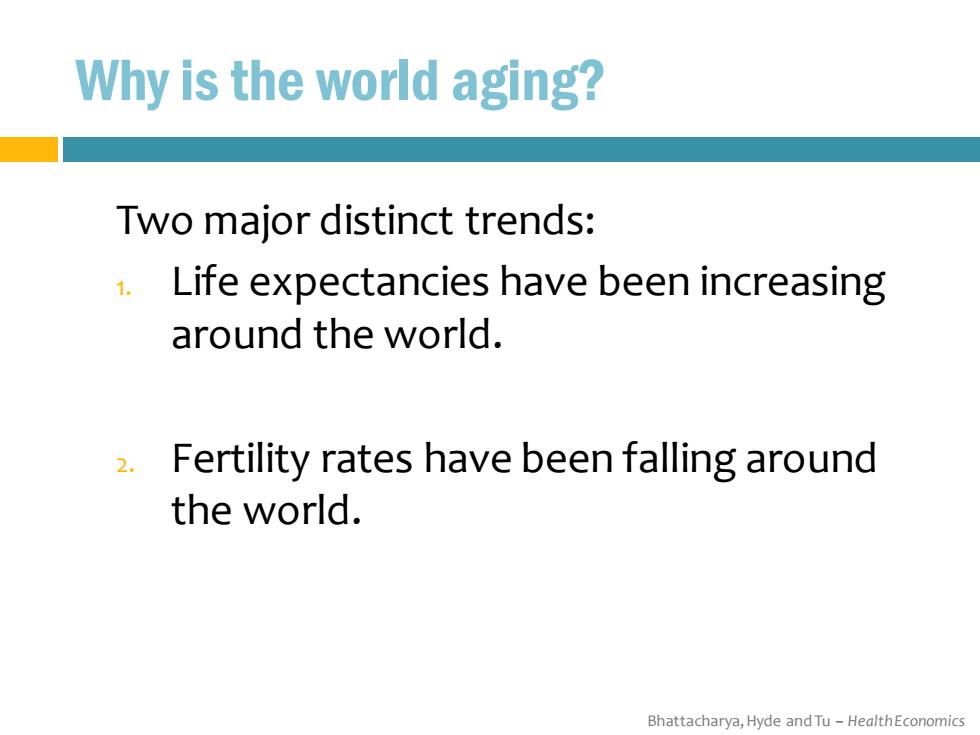
Why is the world aging? Two major distinct trends: Life expectancies have been increasing around the world. 2.Fertility rates have been falling around the world. Bhattacharya,Hyde and Tu-HealthEconomics
Bhattacharya, Hyde and Tu – Health Economics Why is the world aging? Two major distinct trends: 1. Life expectancies have been increasing around the world. 2. Fertility rates have been falling around the world
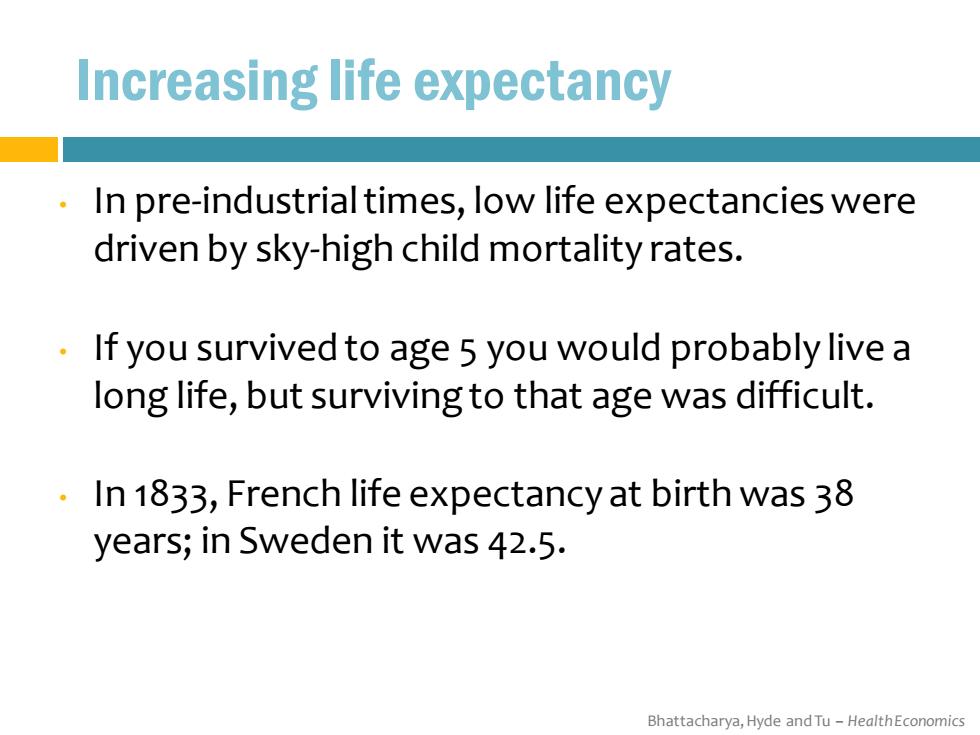
Increasing life expectancy In pre-industrial times,low life expectancies were driven by sky-high child mortality rates. If you survived to age 5 you would probably live a long life,but surviving to that age was difficult. In 1833,French life expectancy at birth was 38 years;in Sweden it was 42.5. Bhattacharya,Hyde and Tu-HealthEconomics
Bhattacharya, Hyde and Tu – Health Economics Increasing life expectancy • In pre-industrial times, low life expectancies were driven by sky-high child mortality rates. • If you survived to age 5 you would probably live a long life, but surviving to that age was difficult. • In 1833, French life expectancy at birth was 38 years; in Sweden it was 42.5
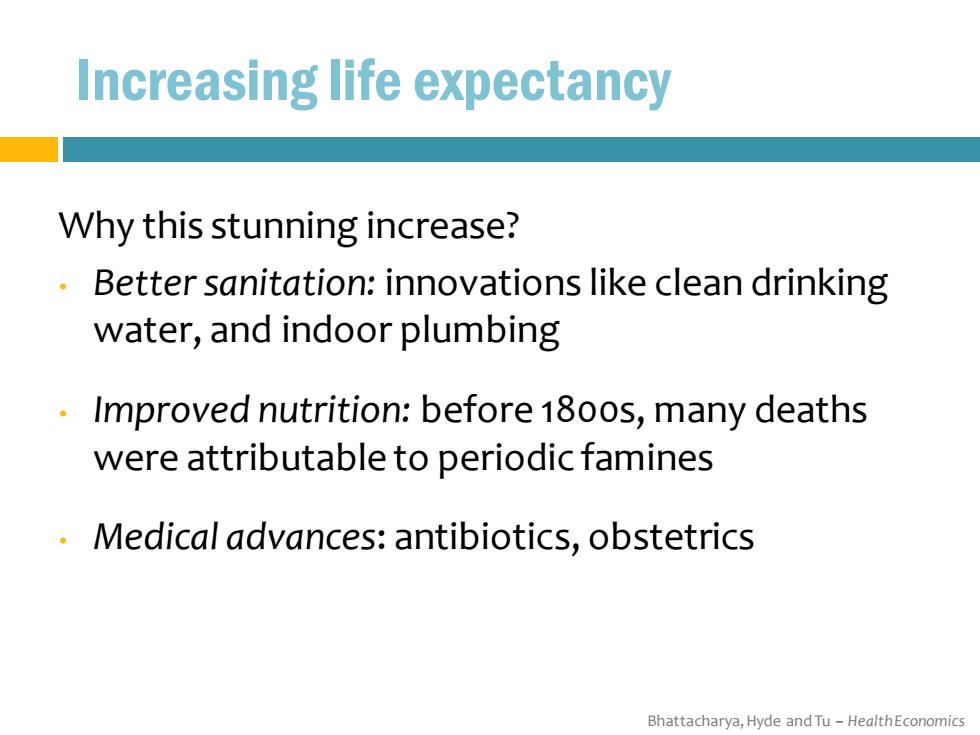
Increasing life expectancy Why this stunning increase? Better sanitation:innovations like clean drinking water,and indoor plumbing Improved nutrition:before 18oos,many deaths were attributable to periodic famines Medical advances:antibiotics,obstetrics Bhattacharya,Hyde and Tu-HealthEconomics
Bhattacharya, Hyde and Tu – Health Economics Increasing life expectancy Why this stunning increase? • Better sanitation: innovations like clean drinking water, and indoor plumbing • Improved nutrition: before 1800s, many deaths were attributable to periodic famines • Medical advances: antibiotics, obstetrics
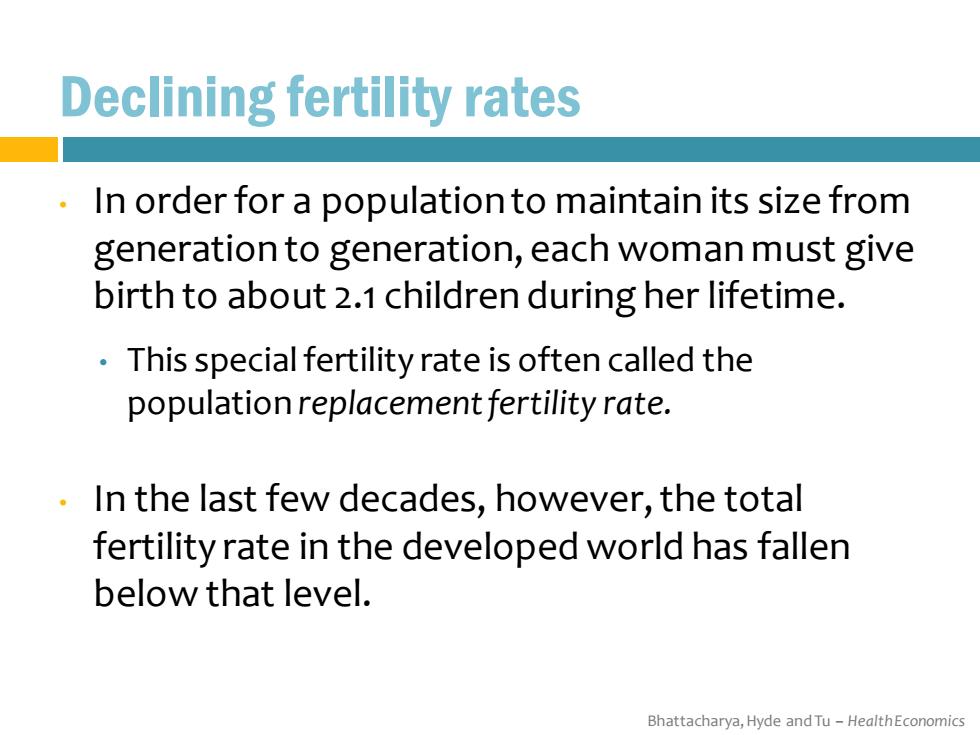
Declining fertility rates In order for a population to maintain its size from generation to generation,each woman must give birth to about 2.1 children during her lifetime. This special fertility rate is often called the population replacement fertility rate. In the last few decades,however,the total fertility rate in the developed world has fallen below that level. Bhattacharya,Hyde and Tu-HealthEconomics
Bhattacharya, Hyde and Tu – Health Economics Declining fertility rates • In order for a population to maintain its size from generation to generation, each woman must give birth to about 2.1 children during her lifetime. • This special fertility rate is often called the population replacement fertility rate. • In the last few decades, however, the total fertility rate in the developed world has fallen below that level
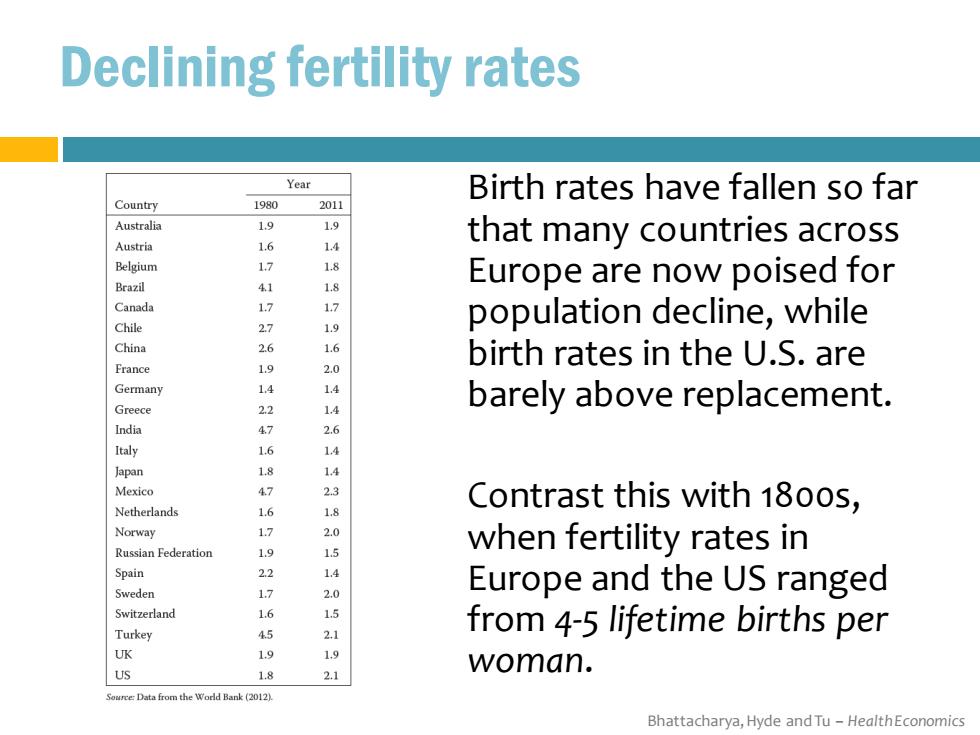
Declining fertility rates Year Birth rates have fallen so far Country 1980 2011 Australia 1.9 1.9 Austria 6 1 that many countries across Belgium 1.8 1.8 Europe are now poised for Brazil 41 Canada 1.7 Chile 7 1.9 population decline,while China 26 1.6 France 2.0 birth rates in the U.S.are Germany 14 Greece 1.4 barely above replacement. India 47 2.6 Italy 14 Japan Mexico 4 23 Netherlands 8 Contrast this with 1800s, Norway 2.0 Russian Federation 15 when fertility rates in Spain 2 4 Sweden 2.0 Europe and the US ranged Switzerland 6 Turkey 21 from 4-5 lifetime births per UK 1.9 1.9 US 1.8 2.1 woman. Soure:Data from the World Bank (2012). Bhattacharya,Hyde and Tu-HealthEconomics
Bhattacharya, Hyde and Tu – Health Economics Declining fertility rates Birth rates have fallen so far that many countries across Europe are now poised for population decline, while birth rates in the U.S. are barely above replacement. Contrast this with 1800s, when fertility rates in Europe and the US ranged from 4-5 lifetime births per woman
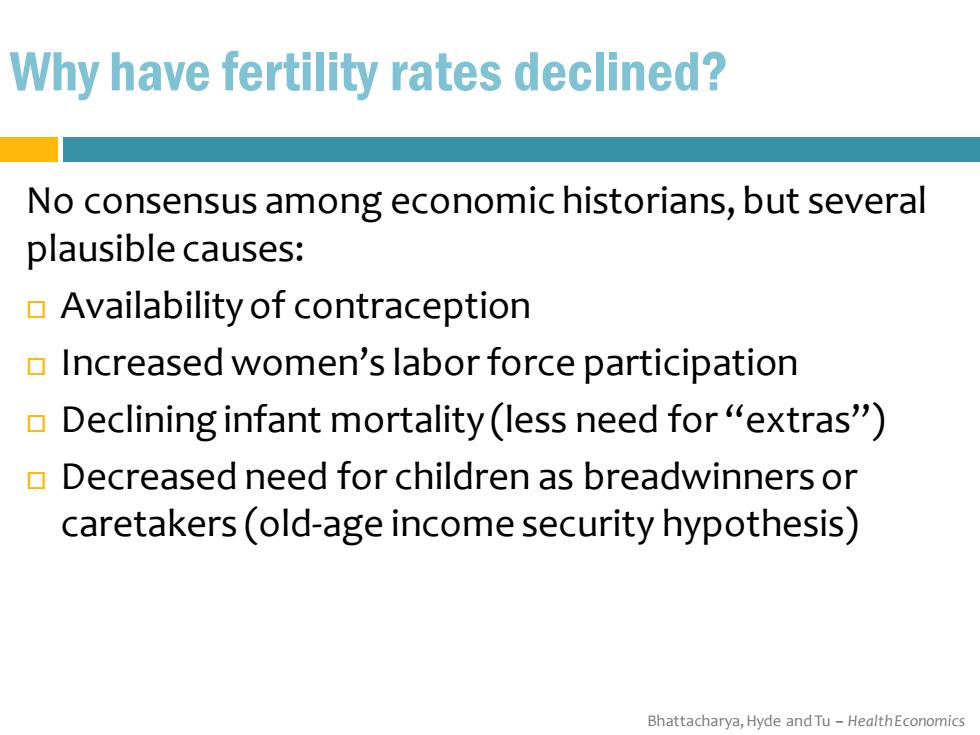
Why have fertility rates declined? No consensus among economic historians,but several plausible causes: Availability of contraception Increased women's labor force participation Declining infant mortality(less need for "extras") Decreased need for children as breadwinners or caretakers(old-age income security hypothesis) Bhattacharya,Hyde and Tu-HealthEconomics
Bhattacharya, Hyde and Tu – Health Economics Why have fertility rates declined? No consensus among economic historians, but several plausible causes: Availability of contraception Increased women’s labor force participation Declining infant mortality (less need for “extras”) Decreased need for children as breadwinners or caretakers (old-age income security hypothesis)